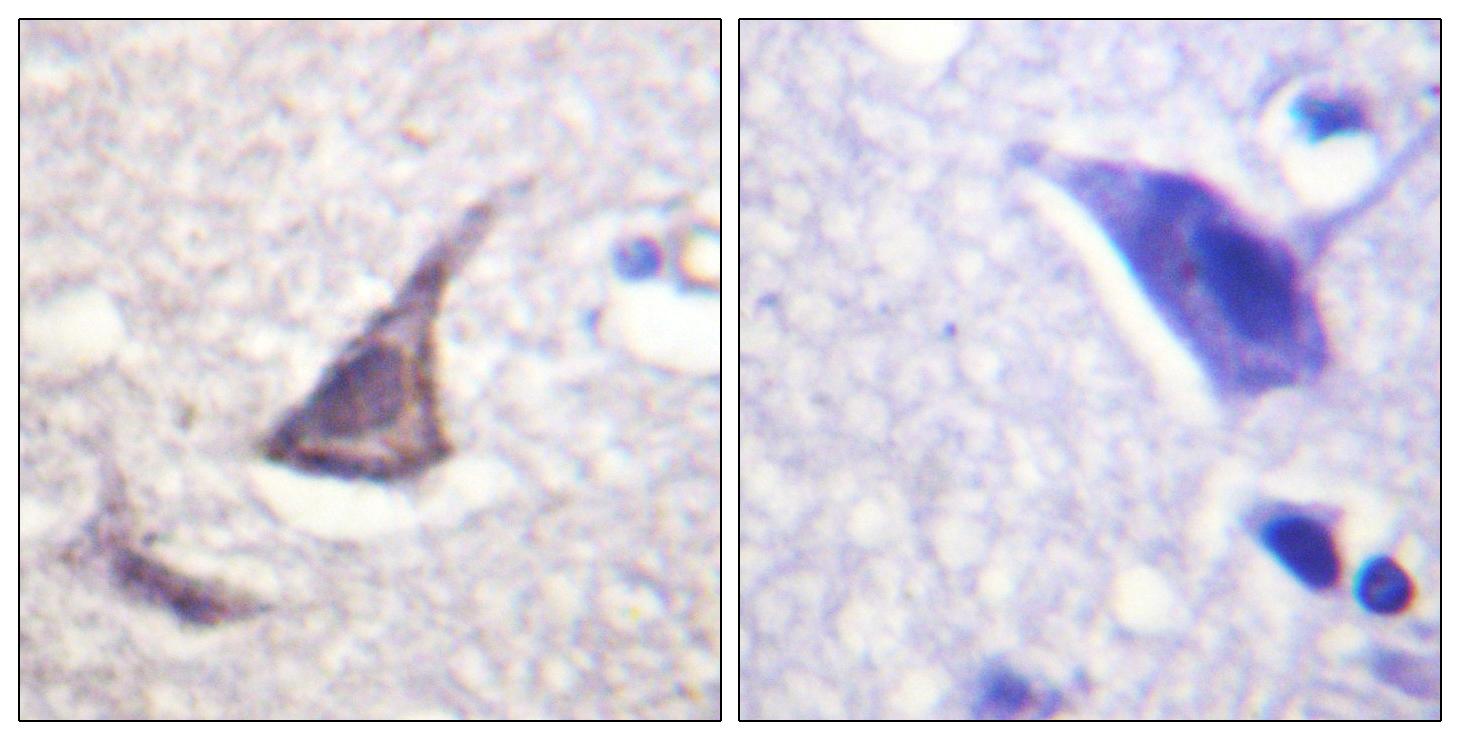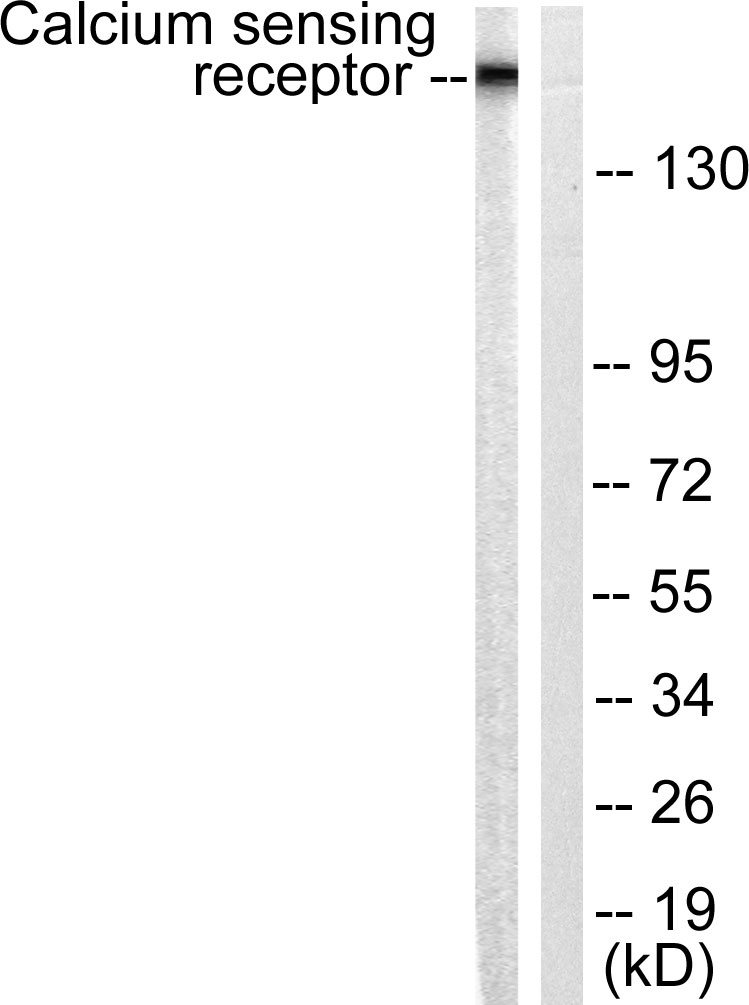产品名称
CaSR Rabbit Polyclonal Antibody
别名
CASR; GPRC2A; PCAR1; Extracellular calcium-sensing receptor; CaSR; Parathyroid cell calcium-sensing receptor; PCaR1
蛋白名称
Extracellular calcium-sensing receptor
存储缓冲液
Liquid in PBS containing 50% glycerol, 0.5% BSA and 0.02% New type preservative N.
Human Gene Link
http://www.ncbi.nlm.nih.gov/sites/entrez?db=gene&term=846
Human Swissprot No.
P41180
Human Swissprot Link
http://www.uniprot.org/uniprotkb/P41180/entry
Mouse Gene Link
http://www.ncbi.nlm.nih.gov/sites/entrez?db=gene&term=12374
Mouse Swissprot No.
Q9QY96
Mouse Swissprot Link
http://www.uniprot.org/uniprot/Q9QY96
Rat Gene Link
http://www.ncbi.nlm.nih.gov/sites/entrez?db=gene&term=24247
Rat Swissprot Link
http://www.uniprot.org/uniprot/P48442
免疫原
The antiserum was produced against synthesized peptide derived from human Calcium Sensing Receptor. AA range:854-903
特异性
CaSR Polyclonal Antibody detects endogenous levels of CaSR protein.
稀释度
WB 1:500 - 1:2000. IHC 1:100 - 1:300. ELISA: 1:5000.. IF 1:50-200
宿主
Polyclonal, Rabbit,IgG
背景介绍
The protein encoded by this gene is a G protein-coupled receptor that is expressed in the parathyroid hormone (PTH)-producing chief cells of the parathyroid gland, and the cells lining the kidney tubule. It senses small changes in circulating calcium concentration and couples this information to intracellular signaling pathways that modify PTH secretion or renal cation handling, thus this protein plays an essential role in maintaining mineral ion homeostasis. Mutations in this gene cause familial hypocalciuric hypercalcemia, familial, isolated hypoparathyroidism, and neonatal severe primary hyperparathyroidism. [provided by RefSeq, Jul 2008],
组织表达
Expressed in the temporal lobe, frontal lobe, parietal lobe, hippocampus, and cerebellum. Also found in kidney, lung, liver, heart, skeletal muscle, placenta.
细胞定位
Cell membrane ; Multi-pass membrane protein .
功能
disease:Defects in CASR are the cause of autosomal dominant hypoparathyroidism (FIH) [MIM:146200]. FIH is characterized by hypocalcemia and hyperphosphatemia due to inadequate secretion of parathyroid hormone. Symptoms are seizures, tetany and cramps.,disease:Defects in CASR are the cause of familial hypocalciuric hypercalcemia type 1 (FHH) [MIM:145980]; in which the receptor has reduced activity. FHH is characterized by altered calcium homeostasis. Affected individuals exhibit mild or modest hypercalcemia, relative hypocalciuria, and inappropriately normal PTH levels.,disease:Defects in CASR are the cause of neonatal severe primary hyperparathyroidism (NSHPT) [MIM:239200]; in which the receptor has reduced activity. NSHPT is a rare autosomal recessive life-threatening disorder characterized by very high serum calcium concentrations, skeletal demineralization, and parathyroid hyperplasia. In some instances NSHPT has been demonstrated to be the homozygous form of FHH.,function:Senses changes in the extracellular concentration of calcium ions. The activity of this receptor is mediated by a G-protein that activates a phosphatidylinositol-calcium second messenger system.,PTM:N-glycosylated.,PTM:Ubiquitinated by RNF19A; which induces proteasomal degradation.,similarity:Belongs to the G-protein coupled receptor 3 family.,subunit:Interacts with VCP and RNF19A.,tissue specificity:Found in kidney, but not in brain, lung, liver, heart, skeletal muscle, or placenta.,
纯化
The antibody was affinity-purified from rabbit antiserum by affinity-chromatography using epitope-specific immunogen.


